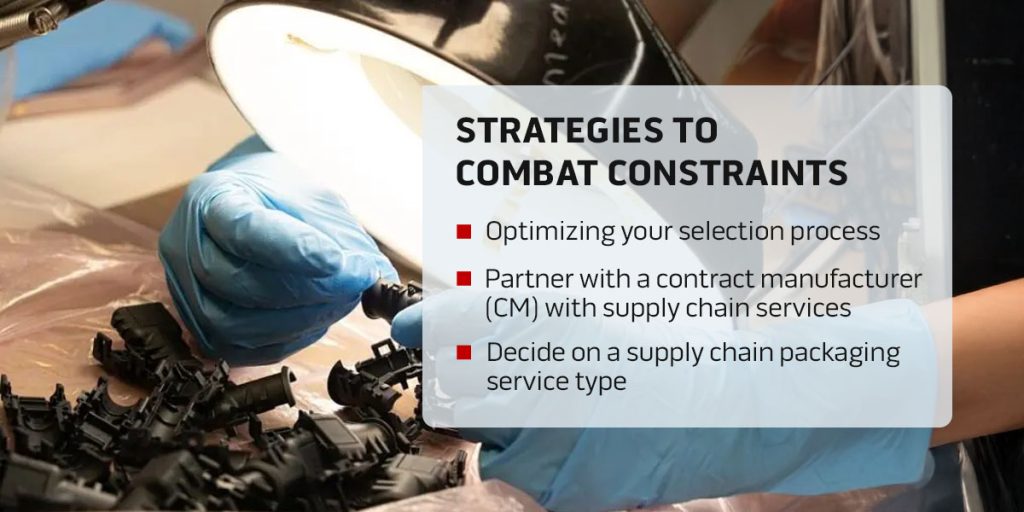
Sourcing high-quality electronic components is essential to create quality products for your brand. Choosing the right parts ensures that your products are functional and useful for end users.
However, electronic sourcing isn’t as easy as it seems, especially in the face of supply chain challenges. Sourcing must be handled carefully to ensure you receive high-quality product parts. Below, you’ll learn more about sourcing and overcoming supply chain challenges using different sourcing options.
When looking for an electronic parts supplier for high-quality parts to use in your products, sourcing agents can help find electronic parts on your behalf. They can help ensure you work with the best supplier at the most affordable price without sacrificing quality. Businesses that don’t utilize sourcing services typically store their sourcing data in spreadsheets or separate files, making information difficult to find.
Sourcing electronic parts for your products is a time-consuming process with various challenges. If you’re trying to source your electronic parts but aren’t sure where to start, it’s best to utilize a professional sourcing agent. These agents can organize data about potential electrical component distributors in one place, making the process less complex.
Many markets and industries rely on sourcing agents — or electronic components brokers — to source components for electrical system designs and other applications. Some of these markets and industries include the following:
Any product that requires electronics must source quality electronic parts. Distributors help ensure you find high-quality parts at an affordable price.

Supply chain challenges affect the ability to source components. Some of the ways that supply chains affect sourcing include:
You have a few options regarding where to purchase electronic components from:
Electrical components manufacturers are responsible for their products’ design, production and branding. Manufacturers help ensure products reach end users through authorized distributors or a direct line. There are many benefits of buying directly from an electrical component manufacturer, including the following:
While there are many benefits to buying from the manufacturer, there are also some drawbacks. For example, periods of disruption could cause manufacturers to prioritize large authorized distributors over your business. Higher spending levels are also necessary to become an eligible customer.
You may prefer distributor-based purchasing, which includes several selling channels, such as wholesalers, international distributors and retailers. You’ll also have access to numerous online stores to reach a broader market. Some of the pros of distributor-based purchasing include the following:
A potential drawback of distributor-based purchasing is that it lengthens the supply chain, which leaves your business vulnerable to more disruption if a setback occurs. Another drawback is that product quality, packaging and price could be compromised.
Brokers don’t have formal ties with authorized distributors. Distributors can get hard-to-find parts, but there is some risk. You may not need after-sales support, or you may receive counterfeit goods. Some brokers also have higher prices than if you chose a different option.
Another sourcing option is working with a catalog supplier. These suppliers offer various products in small quantities, allowing you to buy them in smaller amounts and receive your delivery quickly. Another benefit of catalog suppliers is that they’re more convenient than other sourcing options.
However, since catalog suppliers are more convenient, prices are often higher than other sourcing options. If you’re looking for a more affordable option with a larger supplier, you may be better off buying directly from the manufacturer or utilizing distributor-based purchasing.
Using the right electronic component sourcing strategies can help you combat supply chain issues. Methods you can use for electronic sourcing components and overcoming limitations include:

Alternative electronic components are reliable substitutes when original parts are unavailable due to supply chain constraints, extended lead times or cost fluctuations. These components are sourced from different manufacturers or available as refurbished or surplus stock to ensure continued production without compromising functionality or performance.
By strategically sourcing alternative components, businesses mitigate supply chain risks, maintain operational efficiency and optimize costs while upholding product quality and reliability.
When a necessary component is no longer in production, the ideal solution is to find a drop-in replacement that closely aligns with the original’s electrical specifications. However, such an exact match isn’t always readily available, making it necessary to procure an alternative or equivalent part. While the distinction between the two is subtle, it is essential to understand their differences:
Here are the steps to follow when sourcing alternative electronic components:
We’re a trusted electronic components supplier that offers a wide range of services, including manufacturing, rapid design and prototyping, and automation and cost engineering. We aim to consistently exceed our customer’s expectations by putting them first and delivering superior service. We can help you find component-sourcing solutions to help you handle the challenges within the supply chain.
We can help you bring manufacturing solutions to reality, helping you achieve your goals and meet your customers’ demands. Contact us today to learn more about how we can help you find solutions for your business!